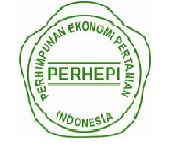Pemanfaatan Lahan Pekarangan untuk Budidaya Pakcoy Sistem Vertikultur pada KWT Mawar di Desa Kuaken Kabupaten Timor Tengah Utara
Abstract
Keywords
Full Text:
PDF (Bahasa Indonesia)References
Abera, A., Tadesse, G., & Belayneh, M. (2017). Practices, roles and challenges of urban agriculture in South Western part of Ethiopia: The case of Bedelle tow. International Journal of Scientific and Research Publications, 7(5), 609–617. http://www.ijsrp.org/research-paper-0517/ijsrp-p6570.pdf
Abu, G. A., & Soom, A. (2016). Analysis of factors affecting food security in rural and urban farming households of Benue State, Nigeria. International Journal of Food and Agricultural Economics, 4(1), 55–68. https://doi.org/10.22004/ag.econ.231375
Bakar, B. A., Ferizal, M., & Yusriani, Y. (2015). Petunjuk teknis: Pengembangan model kawasan rumah pangan lestari (KRPL) Provinsi Aceh. Balai Pengkajian Teknologi Pertanian Aceh. https://nad.litbang.pertanian.go.id/ind/images/dokumen/HasilLitkaji/2012/14-Lap. akhir_MKRPL_Aceh_2012.pdf
Basri, A., & Azis, A. (2011). Arang hayati (Biochar) sebagai bahan pembenah tanah. Serambi Pertanian, 5(6). http://203.190.37.42/inovasi/kl1106-ek77.pdf
Bria, L. N., Sipayung, B. P., & Tobing, W. L. (2021). Pemanfaatan lahan pekarangan melalui sistem vertikultur budidaya sayuran Kelompok Tani Sinar Manumuti Desa Upfaon. Bakti Cendana, 4(1), 68–75. https://doi.org/10.32938/bc.4.1.2021.68-75
Fikdalillah, Basir, M., & Wahyudi, I. (2016). Pengaruh pemberian pupuk kandang sapi terhadap serapan fosfor dan hasil tanaman sawi putih (Brassica pekinensis) pada Entisols sidera. Agrotekbis, 4(5), 491–499. http://jurnal.faperta.untad.ac.id/index.php/agrotekbis/article/view/50
Hasibuan, I. (2017). Konservasi lahan marjinal dengan aplikasi biochar plus. Jurnal Agroqua, 15(2), 43–50. https://journals.unihaz.ac.id/index.php/agroqua/article/view/196
Herath, H. M. S. K., Camps-Arbestain, M., & Hedley, M. (2013). Effect of biochar on soil physical properties in two contrasting soils: An Alfisol and an Andisol. Geoderma, 209–210, 188–197. https://doi.org/10.1016/j.geoderma.2013.06.016
Kusmiati, A., & Solikhah, U. (2015). Peningkatan pendapatan keluarga melalui pemanfaatan pekarangan rumah dengan menggunakan teknik vertikultur. AJIE: Asian Journal of Innovation and Entrepreneurship, 4(2), 94–101. https://doi.org/10.20885/ajie.vol4.iss2.art4
Kusuma, M. E. (2018). Respon rumput Brachiaria decumbens terhadap pemberian biochar dan pupuk organik pada tanah berpasir. Jurnal Ilmu Hewani Tropika, 7(2), 33–38. https://unkripjournal.com/index.php/JIHT/article/view/128
Lewar, Y., & Hasan, M. (2018). Aplikasi biochar dan volume pemberian air terhadap produksi benih kacang merah varietas inerie ngada di dataran rendah lahan kering beriklim kering. Jurnal Penelitian Pertanian Terapan, 17(3), 212–219. https://doi.org/10.25181/jppt.v17i3.349
Mariyam, S., Rahayu, T., & Budiwati. (2014). Implementasi eco-education di sekolah perkotaan melalui budidaya vertikultur tanaman hortikultura organik. Inotek, 18(1), 28–38. https://journal.uny.ac.id/index.php/inotek/article/view/3118
Mulyani, A., & Suwanda, M. H. (2019). Pengelolaan lahan kering beriklim kering untuk pengembangan jagung di Nusa Tenggara. Jurnal Sumberdaya Lahan, 13(1), 41–52. https://doi.org/10.21082/jsdl.v13n1.2019.41-52
Ningsih, G. M., Rasyid, H., & Muhidin. (2016). IBM Budidaya tanaman sayuran secara vertikultur. Seminar Nasional Dan Gelar Produk, 334–339.
Pangaribuan, E. A. S., Darmawati, A., & Budiyanto, S. (2020). Pertumbuhan dan hasil tanaman pakchoy pada tanah berpasir dengan pemberian biochar dan pupuk kandang sapi. Agrosains: Jurnal Penelitian Agronomi, 22(2). https://doi.org/10.20961/agsjpa.v22i2.42093
Salawati, S., Basir, M., Kadekoh, I., & Thaha, A. R. (2016). Potensi biochar sekam padi terhadap perubahan pH, KTK, C organik dan P tersedia pada tanah sawah Inceptisol. Agroland, 23(2), 101–109. http://jurnal.untad.ac.id/jurnal/index.php/AGROLAND/article/view/8795
Saptana, Sunarsih, & Friyatno, S. (2013). Prospek model-kawasan rumah pangan lestari (M-KRPL) dan replikasi pengembangan KRPL. Forum Penelitian Agro Ekonomi, 31(1), 67–87. https://doi.org/10.21082/fae.v31n1.2013.67-87
Sihgiyanti, V. J. (2016). Evaluasi implementasi program urban farming oleh dinas pertanian di Kota Surabaya. Kebijakan Dan Manajemen Publik, 4(2), 264–272. http://journal.unair.ac.id/KMP@evaluasi-implementasi-program-urban-farming-oleh-dinas-pertanian-di-kota-surabaya-article-10921-media-138-category-8.html
Suryana, I. M., Sujana, I. P., & Suyasdipura, I. N. L. (2016). Pengaruh penambahan dosis beberapa jenis biochar pada lahan yang tercemar limbah cair sablon terhadap pertumbuhan tanaman sawi hijau. In L. Hakim & I. M. Tamba (Eds.), Prosiding Seminar Nasional Hasil Penilitian (pp. 438–446). Universitas Mahasaraswati Press.
Tambunan, S., Siswanto, B., & Handayanto, E. (2014). Pengaruh aplikasi bahan organik segar dan biochar terhadap ketersediaan P dalam tanah di lahan kering Malang Selatan. Jurnal Tanah Dan Sumberdaya Lahan, 1(1), 85–92. https://jtsl.ub.ac.id/index.php/jtsl/article/view/103
DOI: https://doi.org/10.20961/prima.v6i1.54029
Refbacks
- There are currently no refbacks.
View My Stats

This work is licensed under a Creative Commons Attribution-ShareAlike 4.0 International License.


.jpg)



1.jpg)











